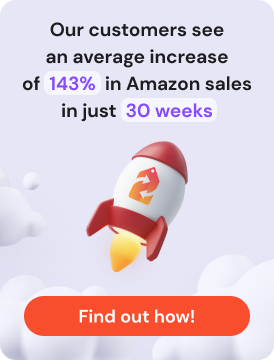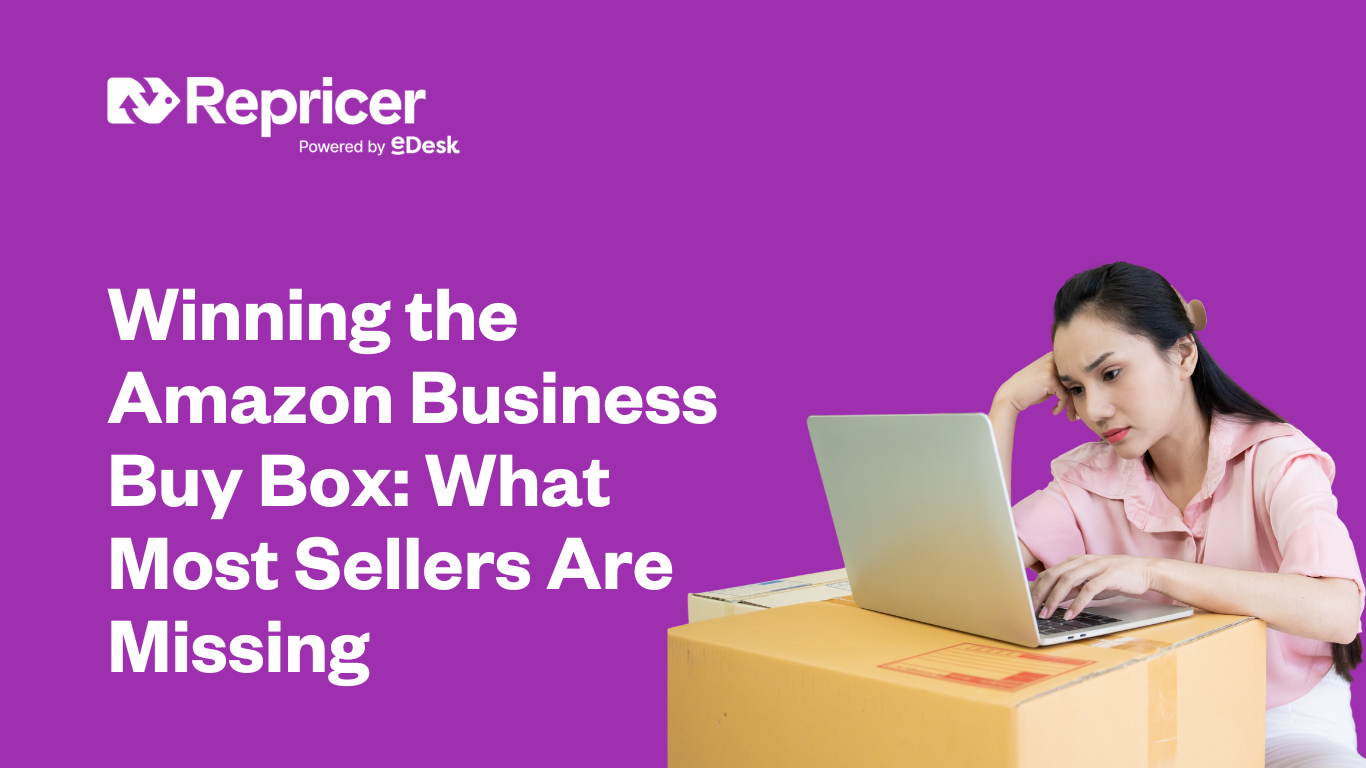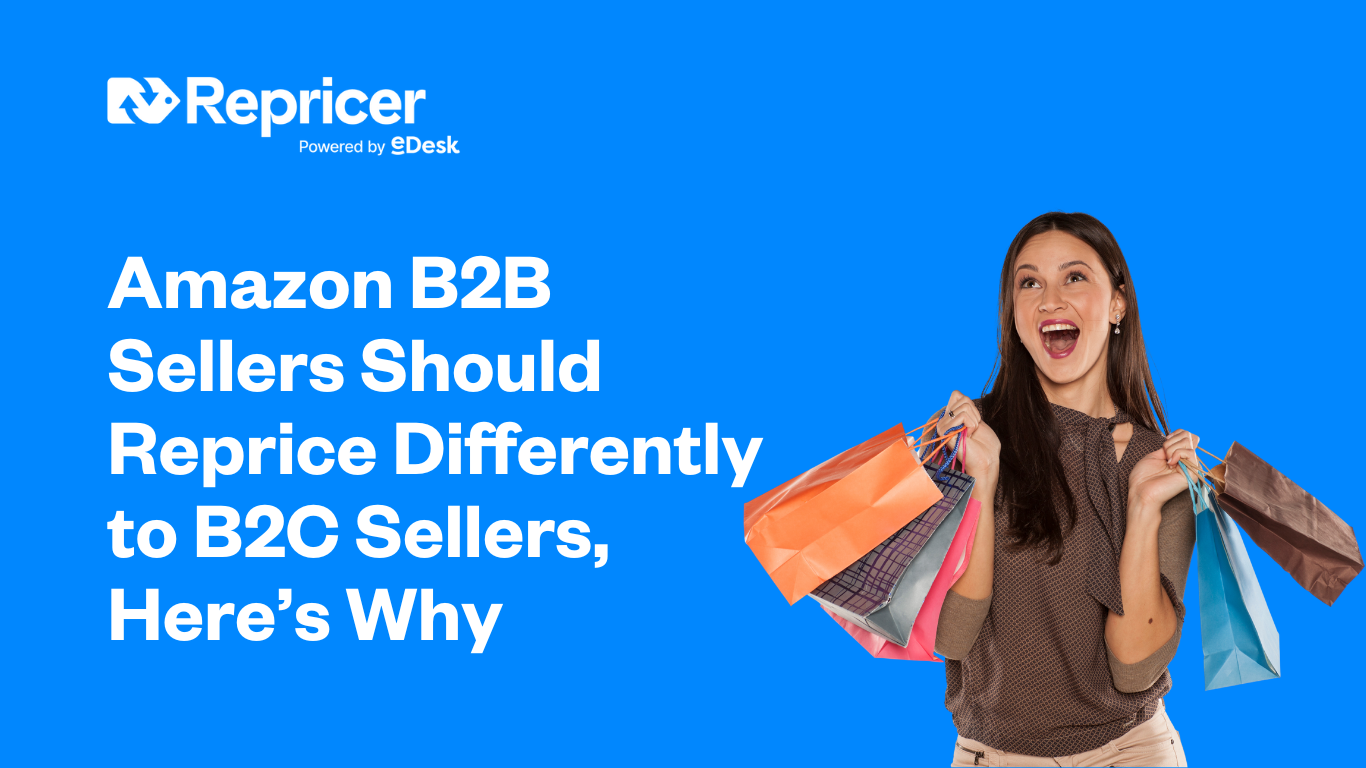Amazon e Shopify sono entrambi protagonisti della crescita dell’ecommerce, rendendo la vendita di prodotti elettronici sempre più accessibile e vantaggiosa per le piccole e grandi imprese. Se Amazon è ancora il chiaro vincitore per quanto riguarda il volume di traffico sulla piattaforma, con oltre 2,5 miliardi di visite mensili, Shopify non è da meno.
Entrambe le piattaforme sono molto apprezzate per la loro facilità di utilizzo e di navigazione, consentendo ad aziende di ogni dimensione e livello di esperienza di vendere i propri prodotti online. Quando si tratta di fare un confronto tra le due piattaforme e di avere un dibattito su Shopify e Amazon, è importante riconoscere che le offerte sono molto diverse.
Le piattaforme sono simili in termini di opportunità di vendita che possono offrire, ma quando si tratta delle loro caratteristiche individuali, delle difficoltà che i venditori devono affrontare e delle esigenze uniche della tua azienda, devi fare molte ricerche per identificare la piattaforma giusta per te.
Repricer.com è qui per aiutare il tuo marchio a valutare le opzioni e a prendere decisioni di vendita ponderate, sia che tu decida di utilizzare Shopify, Amazon o entrambi!
Shopify
Per dare il via alla discussione Shopify vs Amazon, diamo un’occhiata ai due prodotti uno per uno. Shopify è una piattaforma di ecommerce che offre agli utenti uno spazio dedicato basato su cloud per creare un negozio online dedicato alla vendita del proprio marchio. In sostanza, puoi creare e realizzare un sito web di ecommerce per la tua attività a cui indirizzare i clienti esistenti e potenziali.
Shopify può essere utilizzato da aziende di qualsiasi dimensione, ma è importante tenere presente che dovrai partire da zero, costruendo la reputazione del tuo marchio, aumentando la visibilità e generando traffico verso il tuo negozio.
Per i marchi già affermati online, Shopify può essere molto utile per creare un negozio che offra al tuo pubblico un’esperienza di acquisto creativa e di marca. Per le nuove aziende o per quelle più piccole, invece, dovrai essere pronto a dedicare una quantità significativa di tempo e denaro per generare consapevolezza del marchio e promuovere il tuo negozio attraverso i vari canali.
Quali sono i vantaggi di vendere su Shopify?
Gamma di strumenti di vendita
Se da un lato l’aspetto di un sito di e-commerce è importante per fornire ai potenziali clienti una prima impressione positiva, dall’altro deve offrire agli utenti una navigazione e un percorso del cliente fluidi e senza interruzioni. Shopify offre un’incredibile gamma di strumenti e funzionalità che i venditori possono utilizzare per ottimizzare la loro esperienza utente, il loro branding e, in ultima analisi, le loro vendite.
La piattaforma rilascia costantemente nuove funzionalità, alcune incluse nei pacchetti tariffari e altre che le aziende possono acquistare sul loro app store dedicato a un costo aggiuntivo per aggiungerle al proprio negozio.
Alcuni esempi di preziosi strumenti di vendita di cui i venditori di Shopify possono beneficiare sono:
- Generatore di nomi commerciali
- Creatore di logo
- Creatore di slogan
- Recupero dei carrelli abbandonati
- Sistema di gestione dell’inventario
- Calcolo automatico delle tasse
- Integrazioni con le app
Branding e libertà creativa
Se per i marchi emergenti può essere difficile creare un negozio e costruirsi una reputazione, una volta che ci si è affermati attraverso il marketing multicanale, la piattaforma offre molta più libertà creativa e opportunità di branding.
Puoi avere il controllo completo sull’aspetto del tuo negozio, avendo la possibilità di creare un design da zero o di utilizzare un tema o un modello Shopify esistente. Puoi scegliere di optare per un tema gratuito o approfittare dell’ampia gamma di temi premium di Shopify per creare un negozio dall’aspetto professionale che rappresenti davvero il tuo marchio.
Negozio dedicato
Una volta che hai costruito un nome per il tuo marchio e hai un flusso di traffico costante sul tuo sito, puoi trarre vantaggio dall’avere un negozio dedicato al tuo marchio. Se non hai verificato il tuo marchio su Amazon e non hai creato un Amazon Store, i tuoi prodotti verranno visualizzati insieme a tutti i tuoi concorrenti e a prodotti simili, per cui è fondamentale offrire prezzi competitivi e inserzioni ottimizzate.
Avere un negozio Shopify dedicato ti toglie un po’ di pressione sui prezzi e ti permette di mantenere un margine di profitto elevato.
Assistenza ai venditori
Infine, è importante considerare il livello di assistenza disponibile per i venditori. Shopify è rinomato per offrire un elevato livello di supporto alle aziende nel caso in cui si necessiti di assistenza per la creazione del negozio, l’inserimento dei prodotti o nel caso in cui qualcosa vada storto. Shopify dispone di diversi sistemi di assistenza che le aziende possono sfruttare:
- Assistenza telefonica 24/7
- I social media
- Live Chat 24/7
- Forum
- Video tutorial
- Supporto specialistico
- Centro di assistenza completo di guide, tutorial e articoli
Costi
Shopify offre ai venditori tre piani tariffari tra cui scegliere: Basic, Shopify e Advanced. Ogni pacchetto costa naturalmente di più dell’altro, ma in cambio i brand possono accedere e beneficiare di un volume maggiore e di una gamma più ampia di strumenti.
Piano di base
Il piano base di Shopify ha un prezzo di 29 dollari al mese e mira a fornire “tutte le basi per avviare una nuova attività”. Il piano prevede un sito ecommerce e un blog, un volume illimitato di prodotti, assistenza 24/7, vendita multicanale, codici sconto, un certificato SSL gratuito, il recupero dei carrelli abbandonati e l’utilizzo dell’app Shopify.
Piano Shopify
I piani di Shopify sono completamente scalabili, per questo motivo il piano Shopify è pensato per le aziende consolidate che intendono utilizzare Shopify per far crescere la propria reputazione. Offre alle aziende un numero maggiore di account per il personale che gestisce il sito e i prodotti, report sui progressi del sito e tariffe più basse per le carte di credito.
Piano avanzato
Il Piano Avanzato si spinge oltre, offrendo alle aziende quindici account per il personale, report avanzati, tariffe di spedizione calcolate da terzi e tassi di carta di credito ulteriormente ridotti per consentire ai marchi di aumentare le vendite.
Per quanto riguarda l’accettazione dei pagamenti, Amazon e Shopify hanno entrambi i loro gateway di pagamento. Puoi utilizzare Shopify Payments per beneficiare dell’assenza di commissioni di transazione, oppure una serie di altri gateway comuni come PayPal e Amazon Pay per accettare i tuoi pagamenti, che prevedono commissioni variabili.
Amazon
Anziché essere una piattaforma di e-commerce che consente ai marchi di creare il proprio negozio, Amazon è un mercato in cui i venditori possono vendere i propri prodotti insieme ad altri. Piuttosto che un consumatore che atterra sul sito dedicato al tuo marchio, i miliardi di traffico che arrivano su Amazon ogni mese non sono indirizzati esclusivamente ai tuoi singoli prodotti.
Sebbene i marchi registrati su Amazon possano creare un Amazon Store all’interno del marketplace, Amazon è particolarmente vantaggioso per le piccole e medie imprese che possono beneficiare di un’enorme esposizione.
Quali sono i vantaggi di vendere su Amazon?
Ci sono alcuni motivi fondamentali per cui Amazon è una piattaforma preziosa per i brand.
Esposizione
Amazon è probabilmente la piattaforma di commercio elettronico più conosciuta al giorno d’oggi e consente ai venditori di trarne vantaggio e di ottenere un’enorme visibilità grazie all’utilizzo di questa piattaforma per vendere i propri prodotti. A differenza di Shopify, dove è necessario generare la propria notorietà e il proprio traffico, Amazon permette ai marchi senza alcuna reputazione di vendere a un pubblico ampio e numeroso.
Non hai bisogno di un budget enorme per la pubblicità o il marketing cross-canale, quindi puoi dedicare il tuo tempo alla gestione dell’inventario, all’identificazione di nuove opportunità di prodotto e all’ottimizzazione dei tuoi prodotti per la vendita.
Approvvigionamento da parte di Amazon (FBA)
Shopify offre ai venditori un’ampia libertà creativa e un’ampia assistenza per la creazione del sito, ma quando si tratta di evadere gli ordini, sei da solo. Amazon, invece, offre il servizio Fulfilment by Amazon (FBA), che consente ai venditori di affidare ad Amazon stesso lo stoccaggio, l’imballaggio e la spedizione dell’inventario.
I prodotti vengono immagazzinati nei loro magazzini e si occupano dell’intero processo di evasione degli ordini. Il programma FBA ti costerà un po’ di più, ma in cambio avrai accesso a tutti i clienti Amazon Prime. I clienti Amazon Prime tendono a spendere in media molto di più all’anno rispetto agli acquirenti non Prime, il che rende il programma FBA estremamente vantaggioso per i brand che possono permettersi di pagare le tariffe più alte.
Costi
I piani tariffari di Amazon non sono altrettanto chiari: le tariffe variano a seconda di una serie di fattori. I venditori devono decidere se optare per un piano Base o Professionale. Scopri di più sui costi di vendita su Amazon.
Vendita individuale
Il piano “Basic” non prevede pagamenti mensili, bensì il pagamento delle spese di referral e di spedizione per ogni vendita. Si rivolge a coloro che hanno appena iniziato a vendere per conto terzi e che hanno un inventario di meno di quaranta prodotti da offrire al mese.
Vendita professionale
Il piano “Pro” è simile a quello “Basic” in quanto i venditori pagano le spese di referral e di spedizione, oltre al pagamento di un abbonamento mensile per accedere a una gamma più ampia di funzioni e opportunità di vendita.
Se il tuo marchio sceglie di beneficiare del programma FBA, dovrai considerare un’altra serie di tariffe. Le tariffe FBA variano per unità a seconda delle dimensioni, del peso, del tipo di prodotto e anche del periodo dell’anno in cui si sceglie di utilizzare il programma di adempimento. Inoltre, FBA applica una tariffa mensile per lo stoccaggio dell’inventario: tutti costi che devono essere considerati nel budget del tuo marchio.
Per quanto riguarda l’accettazione dei pagamenti su Amazon, la piattaforma dispone di un proprio gateway di pagamento noto come Amazon Pay, che ti permette di accettare senza problemi pagamenti sia con carte di debito che di credito.
Integrazioni con Shopify e Amazon
Da qualche anno a questa parte, non è più necessario decidere chi vince la battaglia tra Shopify e Amazon. Ora puoi trarre vantaggio da entrambe le piattaforme. Shopify può essere integrato con Amazon per beneficiare sia della libertà creativa e degli strumenti di vendita che Shopify offre, sia dell’enorme esposizione che Amazon offre.
Puoi utilizzare Shopify per creare un sito web ecommerce per il tuo marchio e sincronizzare le inserzioni dei prodotti, l’inventario e i dettagli dei prodotti direttamente con Amazon. Dovrai creare un account Amazon Seller e aggiungere il Canale di Vendita Amazon al tuo negozio Shopify per avere un negozio ecommerce dedicato e far apparire i tuoi prodotti nei risultati di ricerca di Amazon.
Tieni presente che l’integrazione di Shopify e Amazon è rivolta a marchi affermati che hanno il budget necessario per sostenere le spese di Shopify e Amazon e per investire nei pagamenti mensili.
Dovresti usare Shopify o Amazon?
Per decidere se utilizzare Shopify o Amazon, tutto dipende dalla tua attività in termini di prodotti, budget e obiettivi. Considera ciò che devi offrire alla tua piattaforma o marketplace di ecommerce, in modo da poter valutare le opzioni e individuare quella migliore per te. Se puoi permettertelo, perché non integrare le due cose e usarle entrambe?
Integrazioni di Repricer.com con Shopify e Amazon
Per i marchi che scelgono di utilizzare Shopify, Amazon o entrambi, è importante tenere sotto controllo i prezzi per assicurarsi di essere proattivi e competitivi con le proprie strategie. Repricer.com supporta i grandi venditori e i marchi consentendo loro di gestire il repricing competitivo su tutti i marketplace e le piattaforme di e-commerce.
Tutto ciò che devi fare è inserire i costi dei tuoi prodotti, i margini di profitto, i livelli delle scorte e altro ancora e lo strumento abbasserà o aumenterà automaticamente i prezzi in base alla domanda, alla concorrenza, ai periodi di picco e altro ancora.
Repricer.com è il repricer Amazon più veloce sul mercato ed è un membro orgoglioso del Marketplace Developer Council di Amazon. Prenota una demo o prova gratuitamente il repricer per 14 giorni e aumenta i tuoi profitti su Amazon, eBay, Walmart, Shopify e molto altro.





